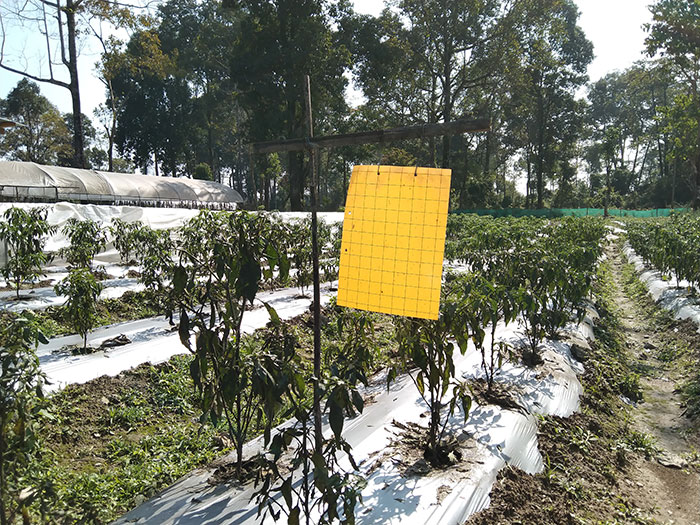ARDC is exploring solutions to common pests
Nima | Gelephu
Most farmers in Sarpang planted chilli saplings for more than two times this season. The prolonged monsoon, followed by cold temperatures wiped out chilli nurseries. Then the pests invaded the fields triggering a huge drop in chilli production in Sarpang.
When the import of chilli was banned in 2016, the agriculture research and development centre (ARDC) in Samtenling released three hybrid chilli varieties.
The official added that there was a high demand for seedlings, as many farmers started to grow chilli on a commercial scale.
A horticulture officer with ARDC, Tshering Yangden said that until last season the hybrids performed well but this time there is a bit of a problem. “The chilli plants were infected with the disease and couldn’t produce well,” she said.
Nurseries couldn’t be kept in an open field. Those raised in the open field were damaged by heavy rains, leading to germination and growth problems in plants.
The most prevalent pest affecting chilli plants are aphids and mites, a complex disease that is difficult to contain, once infested, according to the officials from ARDC.
“The centre recommended farmers to use sprays but the sprays should be used repeatedly to contain the disease,” said Tshering Yangden.
Another way to improve productivity is to develop a new variety or hybrid plants that are pest resistant and high yielding. It takes a minimum of ten years to release a new variety, officials said.
Most farmers from Samtenling said that chillies planted early in September and October were damaged by heavy rainfall, wildlife, and pests.
Principal horticulture officer, GS Rai said the first sowing were all damaged. The protected nursery was encouraged but most of the plants were dead after the transplant.
“It was difficult to harvest chilli in December and January anywhere in the country because of the night temperature that goes below 15 degrees Celsius. This affects the fruiting,” he said.
The official added that there was no damage to cold weather crops. The dzongkhag is selling the surplus to northern dzongkhags today.
“Chilli is a warm-weather crop it would be difficult to grow in two winter months,” said GS Rai.
The centre is exploring a non-toxic method of controlling the common pest such as aphids, mites, and whiteflies using garlic extracts, vegetable oil, and neem oil, which is considered eco-friendly.
Aphids cause leaf yellowing and plant stunting in a chilli plant. Leaves affected appear distorted or curled upward or downward.
Mites are the most common pest in chilli followed by aphids. The management of mites needs to be explored followed by aphids, according to a report from the centre.
Officials said that the most prevalent challenge while growing chilli on a commercial-scale is pest damage and unpredictable monsoon season, which would be difficult to solve. “We can never say how long the problem would exist.”
The centre is expecting to release a pest resistant plants with the study on resistant variety and evaluation underway. The need to adopt climate-smart agriculture is also being explored.
The dzongkhag is expected to see a surplus chilli and vegetable production by the end of February, according to the officials.


